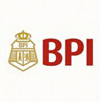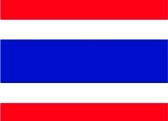All Categories










IMPACTO COLECCIONABLES Foreign Currency Collection - 25 Different World Currency Banknotes - Collectible Currency Foreign - Old World Currency Collection - Banknotes Collection (COA Included)
Share Tweet
Get it between 2025-03-14 to 2025-03-21. Additional 3 business days for provincial shipping.
*Price and Stocks may change without prior notice
*Packaging of actual item may differ from photo shown
- Electrical items MAY be 110 volts.
- 7 Day Return Policy
- All products are genuine and original
- Cash On Delivery/Cash Upon Pickup Available








IMPACTO COLECCIONABLES Foreign Currency Collection Features
-
25 Banknotes from the World: Human history has a tangled path, and there are items that support us in researching the events in the past. Take these 25 different banknotes to get to know their stories carefully.
-
Foundation of Your Collection: 25 foreign currency banknotes will be a good starting point for numismatic enthusiasts to set up their collection. Collection of banknotes will suffice you and promote your thrill and interest in researching the stories of the currencies.
-
Increasing Value: As time passes, these banknotes increase in value as they resemble the countries and governments that are not here anymore. Make a solid investment into your collection and benefit from it as the years pass by.
-
Authenticity Certificate: Every collection has been carefully inspected by a member of the American Numismatic Association and has a Certificate of Authenticity inside. Please notice that bills in a collection are diverse and may vary in quality.
-
What a Gift Idea: Walk no further if you wish to make history gifts to your numismatic friend, a birthday gift, anniversary offering, or wedding present. Our historical gifts currency collection can also serve as an educational basis for children in schools or at home.
About IMPACTO COLECCIONABLES Foreign Currency Collection
Most of the world’s independent nations are less than 70 years old. Africa alone has seen the birth of 51 new countries since the 1950s, and the breakup of the Soviet Union in 1991 gave rise to 15 more. This unique collection features a number of first issues from some of these new countries, many of which feature portraits of national heroes. Some of the banknotes in this collection remain legal tender. Others have been “demonetized”—made obsolete by the nation that printed them. The main reason banknotes become demonetized is because of radical change: war, revolution, rampant inflation, foreign invasion, economic collapse. Thus the quality of the banknotes varies considerably. Some notes show high denominations—evidence of economic problems like inflation. Others printed under the duress of war, were made in such low quality that some have likened them to “Monopoly Money.” In Iraq during the first Gulf War in the early 90s, for example, hastily-printed emergency issues marred by “dull lithographic printing” and a “faint indelible ink watermark,” as noted by Krause’s Standard Catalog of World Paper Money, were of such notoriously low quality that citizens refused to accept them as currency! Indeed, you can tell a lot about a country’s financial condition from its banknotes. Rich countries typically make larger, fancier banknotes with good quality paper, printed on high pressure intaglio presses with steel plates that impart raised portions to the surfaces that can be felt. In times of peace and prosperity, a country typically has the time and resources to design good quality banknotes that are brimming with anti-counterfeiting security features. Countries with fewer resources that need to quickly put out new money frequently resort to issuing smaller notes with simple designs, offset-printed on cheap paper, with security features either very limited, or else entirely absent.





















